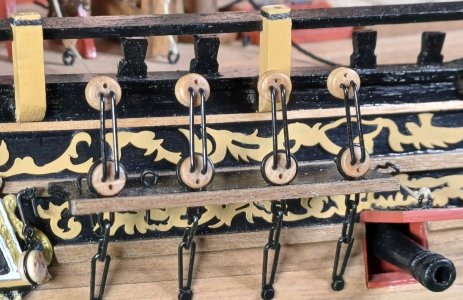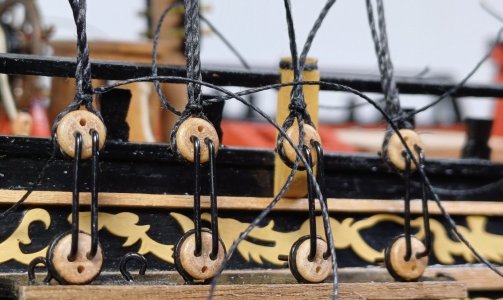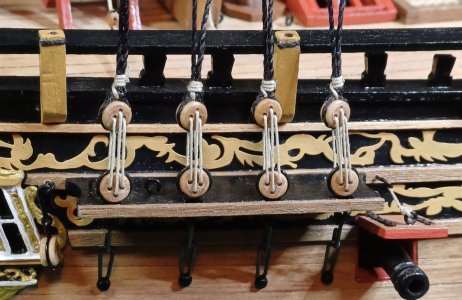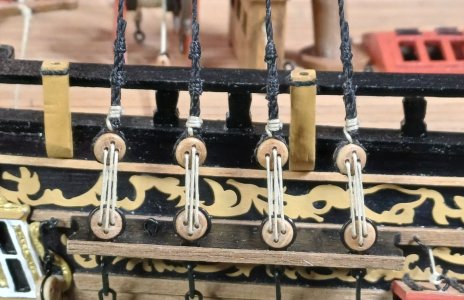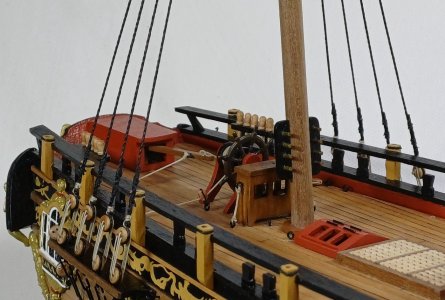When I noticed barnacles forming under the hull of my much-neglected
HMS Fly I knew that I'd been away from the shipyard too long, and I was relieved to pick up where I'd left off a couple of months ago and continue with the rigging of this fine vessel.
Of course, I thought that the completion of the hull was the starting point for all things rigging, and that I'd be laying all manner of lines and ropes that make up the cobweb of rigging on this ship, little thinking of all the numerous blocks that first need to be fitted to the yards and masts
 View attachment 511015
View attachment 511015
Rigging the blocks to the yards and masts was reasonably straightforward. I discovered various techniques for fastening a block to a spar, most of which attempt to do two things: to minimise the size of the knot or seizing around the block so that it does not look ungainly, and to ensure that the block aligns appropriately with the rope to which it is seized.
The same applied to the footropes installed under the yards. The trick here being to give each footrope a reasonable amount of slack to make it look authentic, and to ensure that the same amount of slack is applied to each footrope on either side of the yard.
View attachment 511016
All of the masts and spars are still very loosely attached at this stage; one good shake and it'll look like a game of pick-up-sticks

Each yard has been fitted with a brass pin in the centre to connect it to its mast. This was done to confirm the arrangement and positioning of the yards, although I suspect they will become a permanent feature later on to provide stability during the rigging process.
View attachment 511017
Thanks for checking in

Mark
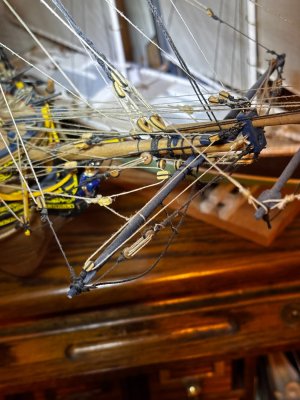




 ) again. All looking great Marc, although I too find the deadeye on the bowsprit yard unusual. Cheers Grant
) again. All looking great Marc, although I too find the deadeye on the bowsprit yard unusual. Cheers Grant

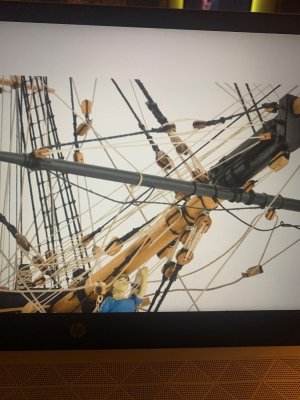


 .
.